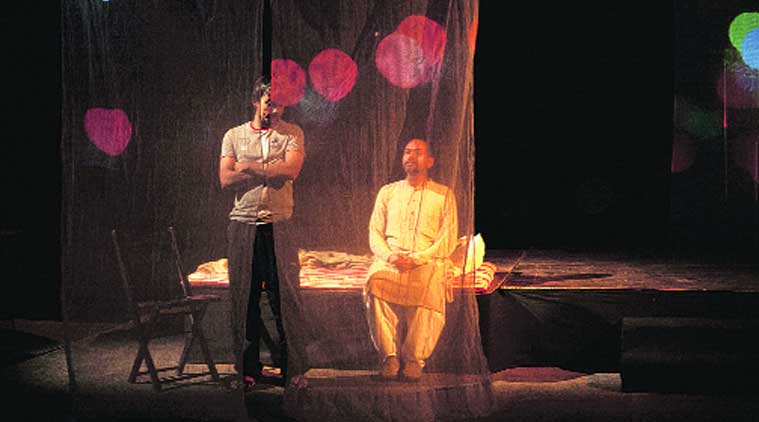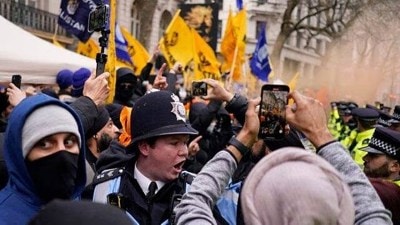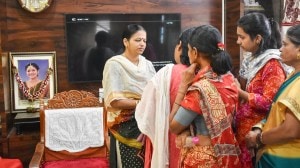- India
- International
Metro Sexual
The Delhi Metro emerges as a character in Tadpole Repertory’s play on homosexual love, Still and Still Moving
 Anirudh Nair (left) and Oroon Das as Adil and Partho
Anirudh Nair (left) and Oroon Das as Adil and Partho
Playwright and theatre director Neel Chaudhuri had set out to write a “slightly untidy love story” when he brought Partho and Adil together. Partho is an older man and a writer. Adil is a student whose politics is expressed through gay pride marches and campus parties. At the time of writing, Chaudhuri was travelling regularly by metro to rehearse for plays and he would observe how every station brought strangers together and thrust them against one another. “There was a sense of distance as well as proximity between people thus forced together,” he says. As the intimate and impersonal scenes played out around him, his story of Partho and Adil began to transform. The Delhi Metro became a metaphor for emotional and contextual distance between people.
Like Tadpole Repertory’s previous award-winning play Taramandal — based on Satyajit Ray’s short story Patol Babu, Film Star — Still and Still Moving breaks the linear action by juxtaposing the main love story with unrelated scenes set on a metro. The 90-minute play was a part of Writer’s Bloc workshop in Mumbai two years ago and is being staged in Delhi.
The venue, too, is unusual — a hall at Max Mueller Bhavan rather than a theater. The sets are white, a colour that highlights flaws. “My approach to theatre is that I don’t want to hide anything. Even in fade-outs, we use blue light so that the audience knows it is in a theatre space,” says the director. Excerpts from an interview:
Why did you use the Delhi Metro as a metaphor in a story about a gay relationship?
I don’t approach the story as a gay love story, for me it is a love story set in the city. I did not want a story that had a neat arc because relationships are illogical in how they tend to start and how they end. I knew I wanted an older man and a younger man, with a physical distance. In the play, I included certain moments and images from life in the metro to punctuate the love story. In most artwork, when a moment or storyline is juxtaposed against another, it automatically creates a meaning. That happened with Still and Still Moving while I was writing or rehearsing.
How many scenes were drawn from real life?
Many incidents really happened around me, such as the one with the Bihari labourers locked in an intimate embrace. I went close to them and heard them talking about work at a site and even using swear words. Later, we had two actors board the metro and stand embracing and we observed the reactions of the other commuters. Some were uncomfortable with the idea of male intimacy taking place right up their faces while others whispered among themselves. Such scenes have been positioned in the play either to consolidate the events in Partho and Adil’s life or prove a counter point.

Like your previous plays, especially Taramandal, Still and Still Moving frequently introduces Bengali conversations.
I think there should be some degree of realistic dialogue. In India, we have bilingual and multilingual speech patterns in our daily lives. Most Bengalis break into Bangla when they talk to each other, when they think that English sounds too neat and scripted.
Is it challenging to direct your own plays?
After seven or eight productions in which I have directed my own writings, I have got to the point where I have a distance from the text. One opening scene that I liked very much was a part of the play in Mumbai but we deleted it later. I now have an emotional detachment as a writer to deal with it. I have got to the point where I would not want to direct my own plays. This is probably the last play I have written that I am directing.
The play is being held at Max Mueller Bhavan till tomorrow. Entry: Free. Contact: 23329604
Apr 26: Latest News
- 01
- 02
- 03
- 04
- 05








































